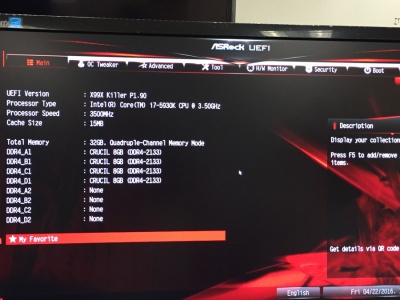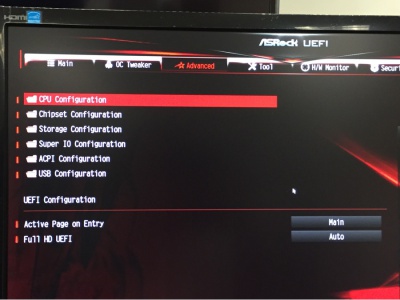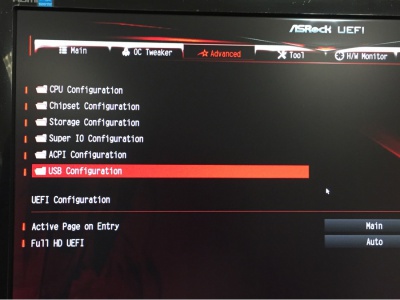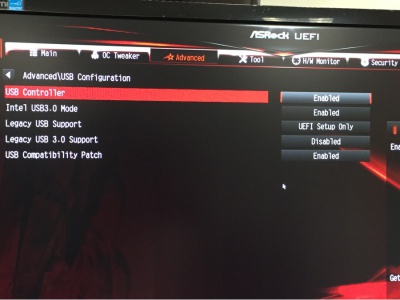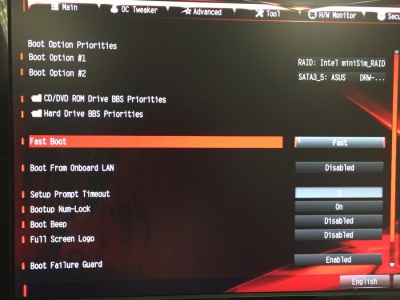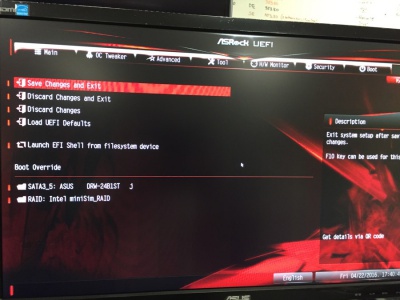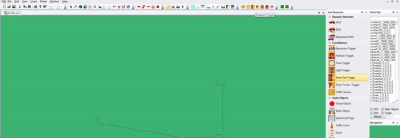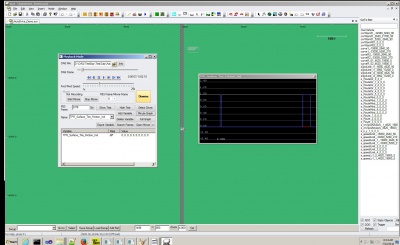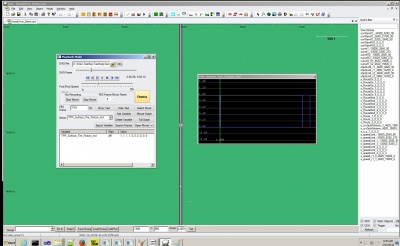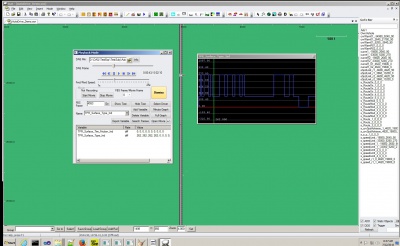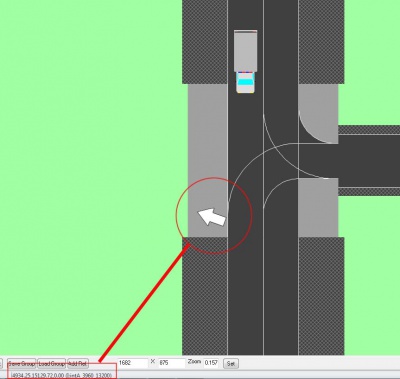FAQ
miniSim Documentation
All miniSim simulators ship with a documentation folder located on the desktop. You can find miniSim and additional documentation within this folder.
miniSim Hardware
Q: Where do I find data relating to the brake pedal force/position?
A: The data you are seeking is represented by the CFS_Brake_Pedal_Force variable, which can be viewed either with ISAT or with Matlab during data reduction. The value ranges from 0 lbs. to 180 lbs., where 0 indicates no force (no pedal travel) and 180 indicates 180 pounds of force (full pedal travel).
If you see a variable named CFS_Brake_Pedal_Position you may ignore this as it is not currently being used.
Q: The tactile transducer, mounted under the cab, suddenly does not respond when the miniSim is running.
Check the following:
1. Verify these connections first:
- a. The main stereo speakers should be plugged into the green audio port on the back of the PC using a ⅛" mini-jack.
- b. The Dayton D-30 amplifier should be plugged into the orange port on the back of the PC using a ⅛" mini-jack.
- c. The tactile transducer should be connected to the Dayton D-30 amplifier using the included speaker wire.
2. Note that the amplifier controls the volume of the tactile transducer and therefore must be plugged into a power source. If the amplifier is not plugged into power, this could be the reason the tactile transducer is not working.
3. Check the volume level of the amplifier. If it is set too low, the tactile transducer may appear to not be working. We suggest a minimum amplifier volume setting of 25% of full volume. A volume setting which is too high will be experienced as an unpleasant vibration and low-end rumble that does not resemble a real car.
4. Launch the Realtek audio manager from the Task Bar and select 5.1 audio. Then, disable the center and rear channels, leaving the front left and right speakers, and the subwoofer enabled.
5. Use the Realtek audio manager to test each of the speakers individually by clicking on each speaker icon. As you select a speaker, the speaker will sound.
Some motherboards have the sub/center channels switched. In this case, a ⅛" mini-jack to stereo RCA cable can be used.
miniSim Operation
Q: miniSim is not responding.
- miniSim Software is Running but Will Not Load a Drive Scenario:
- Assuming the mouse is functioning, simply close and then restart the miniSim program.
- If the mouse is not functioning, use the keyboard to close and restart the miniSim program i.e. press Alt+Tab to select the minSim program and press Esc to close.
- This step will fix this unresponsive behavior most of the time.
- A miniSim Drive Has Been Selected but Will Not Start:
- Assuming the mouse is functioning, click on the Settings tab and verify all lines are green (ready mode). If one or more lines are red, simply wait for all to become green. If still not green after about 90 seconds, close and restart the miniSim software normally. This step will fix this unresponsive behavior most of the time.
- miniSim Software Stops Running:
- Assuming the mouse is functioning, simply close and then restart the miniSim program.
- If the mouse is not functioning, use the keyboard to close and restart miniSim program i.e. press Alt+Tab to select the minSim program and press Esc to close.
- If the miniSim software will not close, press Ctrl+Alt+Delete and open Task Manager. Within Task Manager, select the SimopServer program and close it. Restart miniSim.
- This process generally will recover miniSim from nearly any unresponsive state.
- miniSim PC Shuts Down Unexpectedly:
- Check for severe storms and possible power outages in your neighborhood.
- If you see smoke or smell something burning near the miniSim PC, carefully unplug the PC from the electrical outlet and fetch your fire extinguisher just in case. When immediate danger passes, consult a local hardware expert to examine your PC for possible electrical shorts, overheating or failure of critical systems such as motherboard, hard drive and etc. Contact NADS miniSim in the event hardware components need to be replaced. See contact information below.
- The miniSim PC Will Not Boot:
- On rare occasions your miniSim PC may not boot to Windows. It may halt the boot process just prior to launching Windows. If your miniSim PC has stopped the boot process before a Windows launch, it is okay to touch the reset button on the PC (the small button next to the power button). If your miniSim PC does not have a reset button, touch the power button lightly one time. There may be a slight delay but then your miniSim PC will restart the boot process. This is the safest way to handle an uncompleted boot sequence.
- In most cases if the system stops prematurely during the boot process, for example, while displaying the motherboard splash screen (typically AMI) or the blinking cursor just prior to the Windows logo, the PC is having trouble enumerating USB devices before loading windows.
- If the system hangs up during the second boot attempt, please check the USB connections. In particular, be sure the mouse and keyboard (typically connected through a USB hub) are in their designated USB ports i.e. nearest to the round PS2 style port (top for tower systems or far left for rackmount systems). These are typically USB 2.0 ports and are checked first during the USB enumeration process at boot. It is critical that the mouse/keyboard connections are made in this way.
- If the mouse/keyboard are connected to the correct USB ports, and your miniSim PC still does not boot, disconnect all USB devices (except mouse and keyboard) and systematically reconnect them one at a time in between reboots. This process will eventually and effectively isolate which USB device may be causing the boot problem. To resolve this conflict, simply plug the suspected USB device into a different USB port. Moving these devices to a different port typically resolves this problem permanently. It often (unfortunately) requires some experimentation (read trial and error) but once you find the right combination of USB devices and ports, this problem goes away.
Also, there are certain steps you should not take to try and resolve an unresponsive miniSim PC condition. Some tactics could actually make the problem worse e.g. damage hard drives, corrupt the operating system, scramble your data. Here are some activities you should not engage in to try and resolve a hanging miniSim PC:
Troubleshooting steps you should NOT try:
- Do not press and hold the power button on the PC while miniSim is running.
- Do not unplug the PC from electrical outlet while miniSim is running.
- Do not unplug mouse, monitors or keyboard while miniSim is running.
Acceptable methods for shutting down an unresponsive PC:
- Close all running programs, press the Windows key and select Shut Down.
- Or, press Ctrl+Alt+Delete and select Shut Down.
- Or, touch the reset button or lightly touch the power button one time.
Making Changes to the BIOS
If your miniSim PC is unresponsive in ways that are not covered above, you may need to make certain changes to the BIOS of your miniSim PC. Altering BIOS settings on a PC is delicate work and requires more than a passing knowledge of computers. Instructions for modifying the BIOS follows but if you would like the assistance of a NADS professional, don’t hesitate to ask.
The BIOS change involves enabling Fast Boot. Fast Boot will disable your USB devices at boot-up thus preventing USB port conflicts and effectively preventing endless USB enumeration and rebooting.
To enter BIOS setup, repeatedly press the Delete key while the computer is powering up. Ultimately you will see a screen that looks like the screen shot below. (This assumes your miniSim PC was built in 2015 or later.)
Navigate to the Advanced tab using the arrow keys on your keyboard and select it.
Scroll down and select USB Configuration.
Make sure your BIOS settings match the settings on the right half of the screen as shown below:
Set Fast Boot to Fast.
Select Save Changes and Exit
NOTE: these settings will disable your USB devices during boot. This will eliminate the USB enumeration problem but will also prevent you from accessing BIOS settings again without a PS2 style keyboard. Feel free to contact NADS for additional information on this condition.
Bear in mind your BIOS screens may look different than the screenshots above but your objective remains the same, enable Fast Boot.
Please don’t hesitate to contact us if you wish help with these settings. Word of Caution: make these changes during normal business hours. If you get stuck in BIOS settings on a weekend or middle of the night, we may not be available to help you.
miniSim Software
wip
ISAT/Scenario
Data Logging: miniSim Default Measures
There are a fixed number of measures available and a limit of 20 events.
More information including which measures are available and how to structure your scenario to support default measures is available here.
Q: How do we make an ADO or DDO go backward?
A: Only DDOs can back up. To accomplish this, start by placing a DDO where desired.
Next, create a path for the DDO; right-click on it and select Extend Path from the pop-up menu.
Then, lay out a path (path nodes are a sequence of yellow dots) to indicate the desired route of travel.
Finally, right-click on each node and select Rotate to set the direction that you wish the DDO to face. The direction at each node can be set independently.
In order to make it appear as though the car is moving backwards, the arrows should point against the direction of travel. To avoid erratic movement, you should add sufficient nodes to create a smooth path. This will result in smoother and more realistic movement of the DDO, especially if you are changing direction rapidly.
Q: How do I invoke an audio event with a road pad trigger?
There are a number of things that must fit together to make this happen correctly:
- Copy your audio file to the C:\NadsMiniSim_x.x\data\sound\DefaultCabSound\Instructs folder. There are no spaces in your audio file name (typically a .WAV file.).
- Find the file instructions.txt in that same folder and open it in a text editor.
- Add an entry to instructions.txt to register your audio file in accordance with the following layout: Unique_ID Filename Normalized_Volume
- Unique_ID is whatever number you assign that is not repeated anywhere else in the file.
- Filename is the name of your .WAV file.
- Normalized_Volume is the volume your audio file should play, where 0.00 is silence and 1.00 is maximum volume.
- Using your Unique_ID, add a Write to Cell action to your road pad trigger. The cell name must be SCC_Audio_Trigger, which is an int(eger), and the value will be your Unique_ID.
Q: How do I add a road pad trigger?
In ISAT, open your scenario and click Roadpad Trigger on the menu bar. Then, move your cursor to the desired spot on the map and click to place.
Q: How do I add an action to a trigger?
Double-click the trigger to bring up an editing dialog. Then, switch to the Actions tab and click on New. Select the Action Type from the available choices and use any remaining options to further refine the behavior of the action.
Q: What is a “Write to Cell” action?
By providing access to simulator variables, a Write to Cell action allows you to program behaviors that cannot be programmed by any other Action type. You can think of Write to Cell as a sort of catch-all action. In other words, if you cannot find an action that fits your criteria perfectly, use Write to Cell.
WARNING: As this action permits low-level access to simulator operations, certain selections may produce undesirable, or even destructive results. Use Write to Cell only when you have a well-defined objective and then only as a last resort.
Q: Can I use TPR_Surface_Tire_Friction_Ind to detect what surface the driver is driving over? In my DAQ file I see lots of zeroes, but some sections have ones. What's going on?
A: Values of one and zero in the DAQ file is because the miniSim is configured to provide a value of 1 when that variable changes.
- From NadsMiniSimCollect.general.txt:
- ; -1 means write to DAQ file only when changes to variable occur
- ; 0 means don't write the variable at all
- ; 1 - n means write the variable to the DAQ file every nth frame
- With these default collect settings, a zero means no change, 1 means a change. Driving a scenario and weaving across and off the roadway results in a DAQ file with ones and zeroes:
- Reviewing the drive DAQ file:
Adding another variable to check what surface types are being driven on (262 is asphalt, mild, dry so this indicates driving on-road):
The file that explains what surface types are can be found in two places: miniSim\data\surfaceType2frictionID.dat (included here in entirety):
# SurfaceIndex NadsDynaIndex Coeff(not used: Here for clarity)
0 1 # Default Condition
1 5 # Terrain
2 14 # Sand
3 6 # Highway
4 6 # Cement
5 15 # Gravel
6 6 # Asphalt
7 12 # Dirt
8 12 # Sod
9 7 # Shoulder
This list is incomplete with respect to the current set of surface material codes used in the tile library and installed worlds. You can find a complete list of available surface material codes (SMC) - (not all of these are used in the tile library, but this is the current version for SMC codes) under the TMT\ProjectData\Tiles\CommonLRIData\SurfaceMaterialSpecifications.xlsx.
MiniSim does not report surface material codes within intersections that do not have an elevation map associated with them, as shown here in ISAT:
For TMT versions prior to 1.8, most intersections do not have elevation maps (v1.8 is in progress and not yet available).
If the issue is that you don’t see 1 values where expected, perhaps you can upload your DAQ file to wetransfer for NADS to review. During testing, I did not ‘lean over’ onto the shoulder – I drove so the entire ownship was on the shoulder, or on terrain.
Another way to check if the driver has left the roadway is to use a lane deviation calculation: if the lane deviation is greater than <measured_total_lane_width> or less than -<measured_total_lane_width>, the driver is likely out of the lane.
